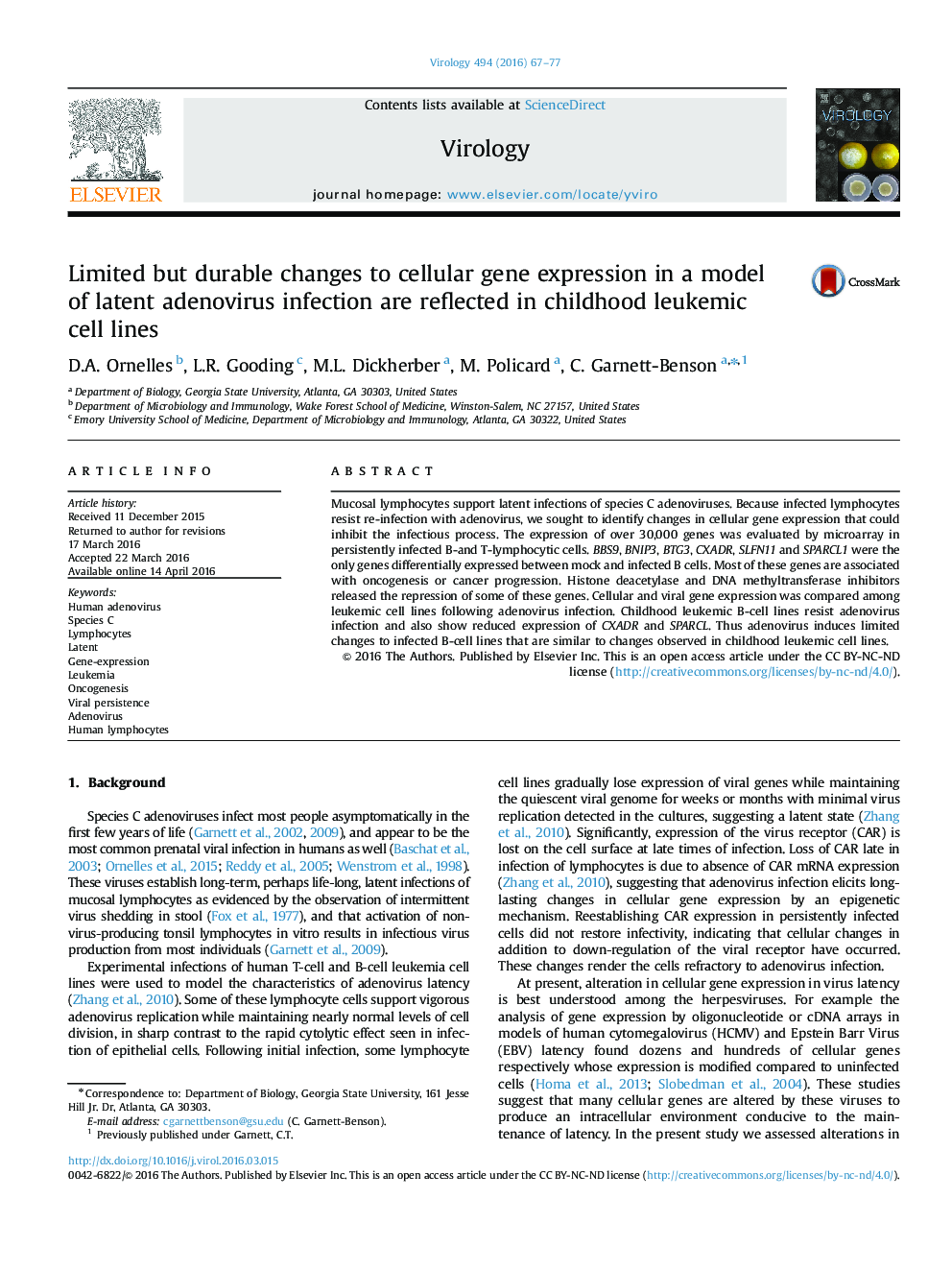| Article ID | Journal | Published Year | Pages | File Type |
|---|---|---|---|---|
| 6138434 | Virology | 2016 | 11 Pages |
â¢Expression of 6 cellular genes was robustly reduced in species C Ad-infected B cells.â¢Adenovirus induced durable changes in the expression of some genes by DNMT activity.â¢Childhood leukemic B-cell lines resist Ad infection similar to Ad-infected B cells.â¢2 of the 6 identified genes exhibited reduced expression in childhood leukemic cells.
Mucosal lymphocytes support latent infections of species C adenoviruses. Because infected lymphocytes resist re-infection with adenovirus, we sought to identify changes in cellular gene expression that could inhibit the infectious process. The expression of over 30,000 genes was evaluated by microarray in persistently infected B-and T-lymphocytic cells. BBS9, BNIP3, BTG3, CXADR, SLFN11 and SPARCL1 were the only genes differentially expressed between mock and infected B cells. Most of these genes are associated with oncogenesis or cancer progression. Histone deacetylase and DNA methyltransferase inhibitors released the repression of some of these genes. Cellular and viral gene expression was compared among leukemic cell lines following adenovirus infection. Childhood leukemic B-cell lines resist adenovirus infection and also show reduced expression of CXADR and SPARCL. Thus adenovirus induces limited changes to infected B-cell lines that are similar to changes observed in childhood leukemic cell lines.
